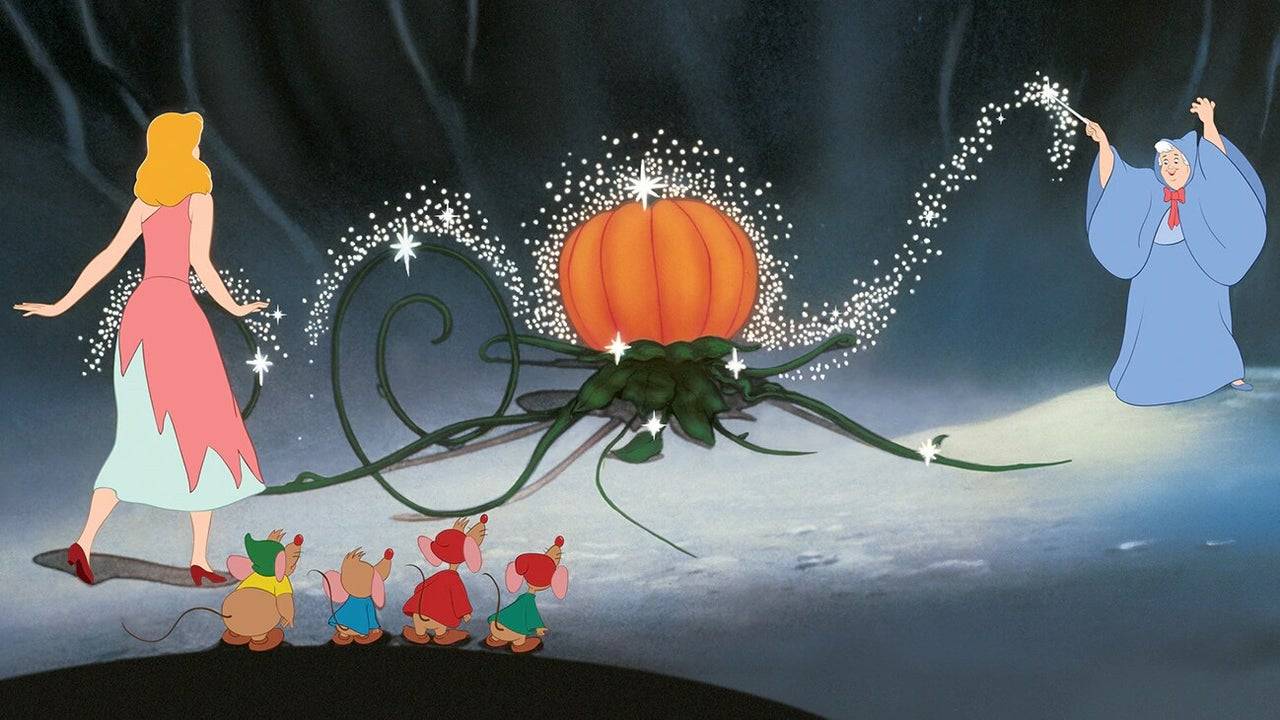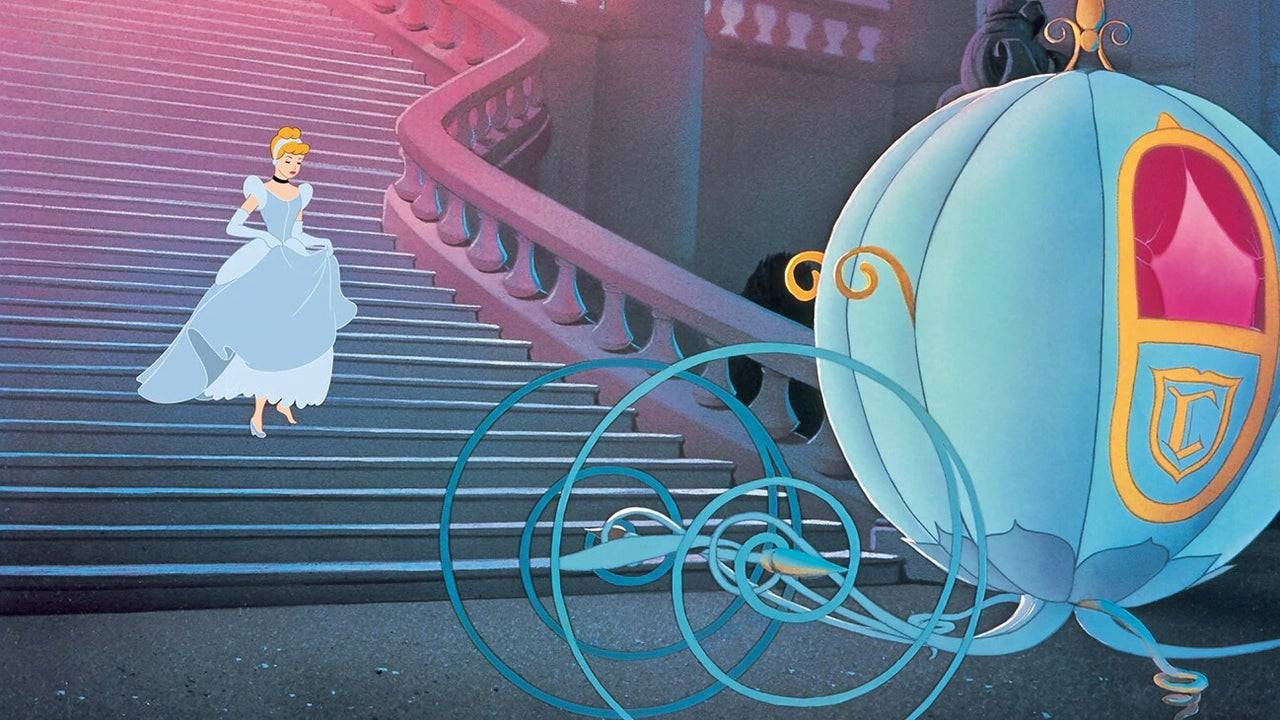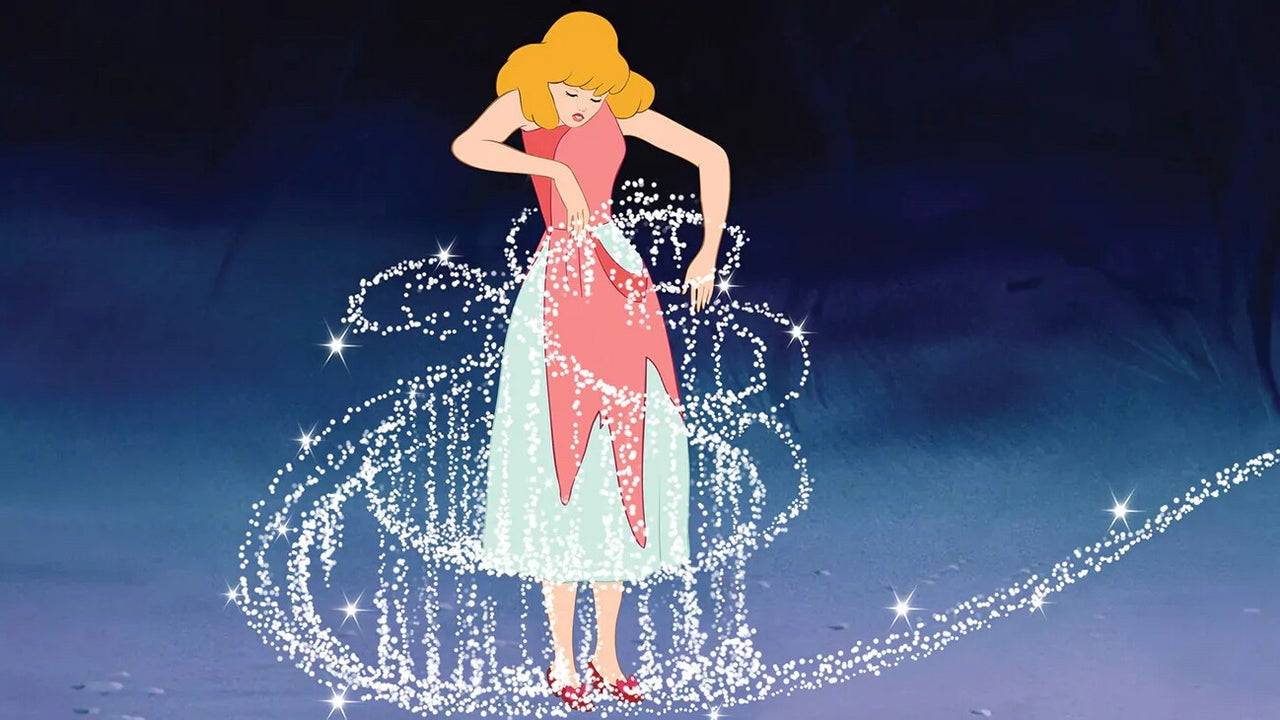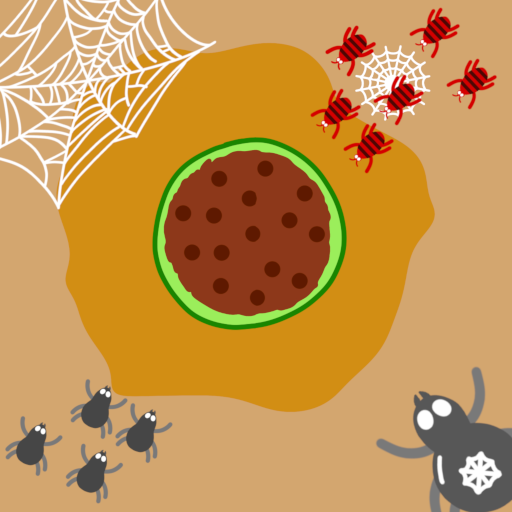Just as Cinderella’s dream come true was set to end at midnight, so too was that of The Walt Disney Company in 1947 after being roughly $4 million in debt following the financial failures of Pinocchio, Fantasia, and Bambi due to World War II and other factors. However, thanks to this beloved princess and her iconic glass slippers, Disney as we know it was saved from having to end its own animation story well before its time.
As Cinderella celebrates its 75th anniversary of its wide release on March 4, we spoke to several Disney insiders who continue to be inspired by this timeless rags-to-riches tale. This story mirrors Walt Disney's own journey and not only revitalized the company but also offered hope to a post-war world seeking inspiration and belief in brighter days ahead.
The Right Film at the Right Time --------------------------------To understand the significance of Cinderella, we must revisit Disney's fairy godmother moment in 1937 with the release of Snow White and the Seven Dwarfs. This film's unprecedented success, the highest-grossing film until Gone with the Wind surpassed it two years later, enabled Disney to establish its Burbank studio, still its headquarters today, and paved the way for future animated feature films.
Disney's subsequent venture, Pinocchio in 1940, carried a hefty $2.6 million budget, about a million more than Snow White, yet it resulted in a $1 million loss despite its critical acclaim and Academy Awards for Best Original Score and Best Original Song. Similarly, Fantasia and Bambi also underperformed, exacerbating the studio's financial woes. The primary reason for these failures was the onset of World War II, sparked by Germany's invasion of Poland in September 1939.
“Disney's European markets dried up during the war, and films like Pinocchio and Bambi couldn't be shown there, leading to poor performance,” explained Eric Goldberg, co-director of Pocahontas and lead animator on Aladdin’s Genie. “The studio then shifted to producing training and propaganda films for the U.S. military. Throughout the 1940s, Disney released 'Package Films' such as Make Mine Music, Fun and Fancy Free, and Melody Time, which, while cost-effective, lacked a cohesive narrative from start to finish.”

Package Films were compilations of short cartoons forming a feature-length film. Disney produced six of these between Bambi in 1942 and Cinderella in 1950, including Saludos Amigos and The Three Caballeros, which supported the U.S. Good Neighbor Policy to counter Nazism in South America. While these films managed to cover their costs and reduced Disney's debt from $4.2 million to $3 million by 1947, they hindered the production of full-length animated features.
“I wanted to return to feature films,” Walt Disney reflected in 1956, according to The Animated Man: A Life of Walt Disney by Michael Barrier. “But it required significant investment and time. A quality animated feature demands both. My brother Roy and I had a heated discussion. It was one of my major frustrations. I said we must either move forward or consider liquidating or selling out.”
With Walt contemplating selling his shares and leaving Disney, he and Roy chose the riskier path, betting everything on a new animated feature since Bambi. Failure could have meant the end of Disney's animation division.
“At that time, Alice in Wonderland, Peter Pan, and Cinderella were all in development, but Cinderella was chosen first due to its similarities to Snow White,” said Tori Cranner, Art Collections Manager at Walt Disney Animation Research Library. “Walt recognized that post-war America needed hope and joy. While Pinocchio is a masterpiece, it lacks the joy that Cinderella brings. The world needed to believe in the possibility of beauty emerging from ashes, and Cinderella was the perfect film for that moment.”
Cinderella and Disney’s Rags to Riches Tale
Walt's fascination with Cinderella dates back to 1922 when he produced a short at Laugh-O-Gram Studios, just two years before founding Disney with Roy. This short, along with the eventual feature film, drew from Charles Perrault’s 1697 version of the tale, which may trace back to between 7 BC and AD 23. The narrative of good versus evil, true love, and dreams coming true deeply resonated with Walt.

“Snow White was a kind and simple girl who believed in wishing and waiting for her Prince Charming,” Walt Disney noted, as seen in Disney’s Cinderella: The Making of a Masterpiece special DVD feature. “Cinderella, however, was more practical. She believed in dreams but also in taking action. When Prince Charming didn’t come to her, she went to the palace and found him herself.”
Cinderella’s strength and resilience, despite her mistreatment by her Evil Stepmother and Stepsisters, mirrored Walt's own journey from humble beginnings through numerous failures and challenges, driven by an unstoppable dream and work ethic.
Walt revisited Cinderella in 1933 as a Silly Symphony short, but its scope grew, leading to a decision in 1938 to develop it into a feature film. Despite delays due to the war and other factors, the project evolved into the beloved film we cherish today.
Disney's success with Cinderella stemmed from its ability to transform traditional fairytales into universally appealing stories. “Disney excelled at reimagining these timeless tales, infusing them with his unique touch, heart, and passion,” Goldberg said. “The original tales were often grim, serving as cautionary lessons. Disney made them enjoyable for all audiences, enhancing their appeal and timelessness.”
Cinderella’s animal friends, including Jaq, Gus, and the birds, added comic relief and depth to her character, while the Fairy Godmother, reimagined as a bumbling, grandmotherly figure by animator Milt Kahl, became more relatable and beloved. The iconic transformation scene, where Cinderella’s belief in herself manifests into a life-changing night, remains a highlight of Disney's animation history.
The dress transformation, credited as Walt’s favorite, was meticulously crafted by Disney Legends Marc Davis and George Rowley. “Every sparkle was hand-drawn and painted on each frame,” Cranner marveled. “There’s a subtle moment where the magic holds before transforming her dress, adding to the scene’s enchanting quality.”
Another Disney innovation was the breaking of the glass slipper, emphasizing Cinderella’s agency and strength. “Cinderella isn’t just a passive character,” Goldberg emphasized. “When the slipper breaks, she presents the other one she kept, showcasing her resourcefulness and control over her destiny.”
Cinderella premiered in Boston on February 15, 1950, and saw a wide release on March 4 of the same year. It became an instant success, earning $7 million on a $2.2 million budget, making it the sixth-highest grossing film of 1950 and earning three Academy Award nominations.
“Critics hailed Cinderella as a return to form for Walt Disney,” Goldberg remarked. “It rekindled the studio's passion for narrative features, leading to the development of classics like Peter Pan, Lady and the Tramp, Sleeping Beauty, 101 Dalmatians, and The Jungle Book.”
75 Years Later, Cinderella’s Magic Lives On
Even after 75 years, Cinderella's influence endures, evident in the iconic castles at Walt Disney World and Tokyo Disneyland, and in the opening sequences of Disney films. Her legacy continues to inspire modern classics, such as the dress transformation scene in Frozen.

“For Elsa’s transformation in Frozen, we wanted to echo Cinderella’s magic,” said Becky Bresee, lead animator on Frozen 2 and Wish. “The sparkles and effects around Elsa’s dress pay homage to Cinderella, connecting our film to Disney's storied past.”
Cinderella’s impact is also seen in the work of the Nine Old Men and Mary Blair, who brought the film to life with their distinctive styles. As Eric Goldberg aptly summarized, “Cinderella’s enduring message is one of hope. It shows that perseverance and strength can lead to dreams coming true, no matter the era.”






